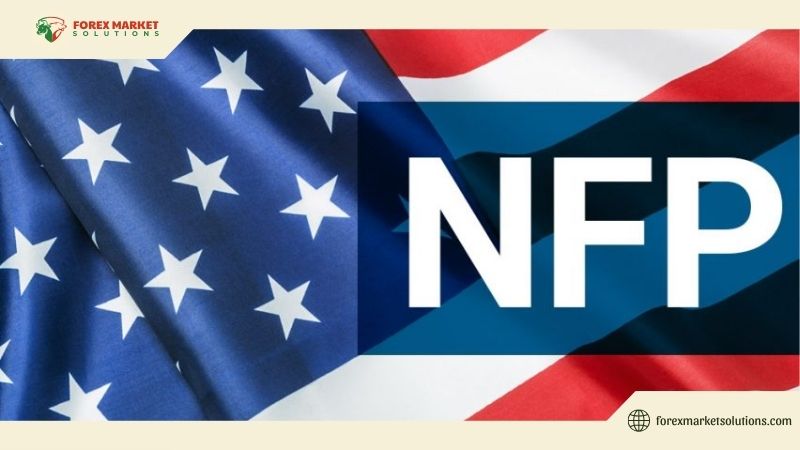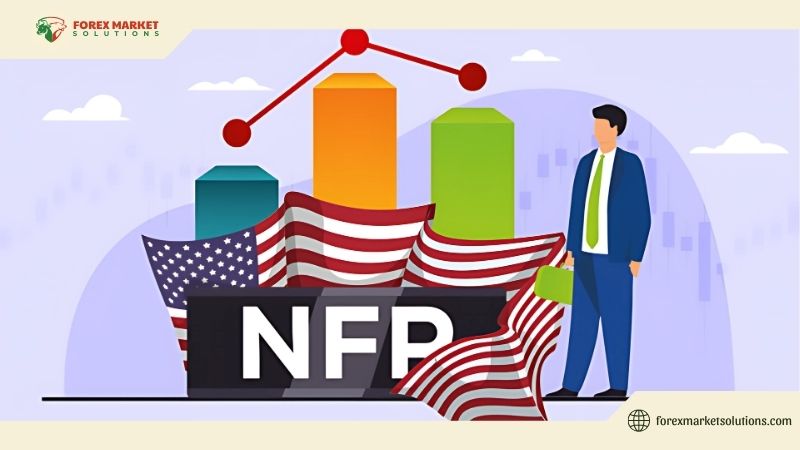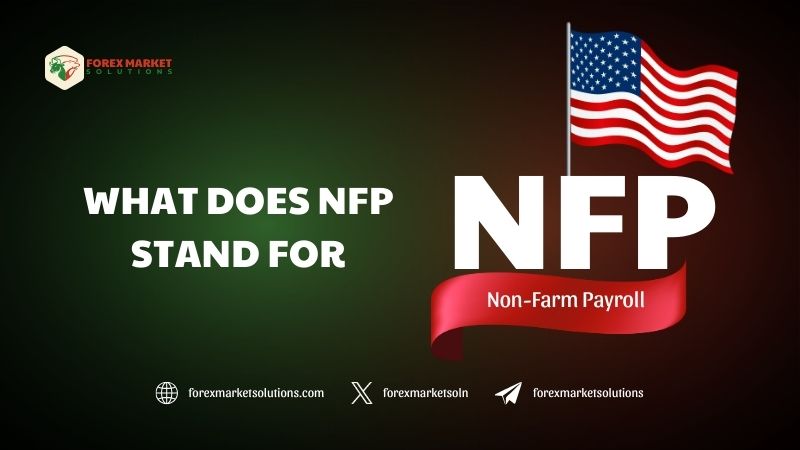In the fast-paced world of Forex trading, certain economic events hold immense power to move markets, and the Non-Farm Payroll (NFP) report is one of them. For those new to trading, the question what does NFP stand for is a critical starting point to understanding this influential report. NFP stands for Non-Farm Payroll, a key economic indicator released monthly by the U.S. Bureau of Labor Statistics. It measures job creation in the U.S., excluding farm workers, government employees, and a few other categories. This article explores the meaning of NFP, its significance in Forex markets, and how traders can leverage it for success.

Understanding the Meaning of NFP
To grasp what does NFP stand for, it’s essential to break down the term. The Non-Farm Payroll report tracks the number of jobs added or lost in the U.S. economy over the previous month, covering industries like manufacturing, construction, and services. Released on the first Friday of each month, the NFP data provides a snapshot of economic health, influencing everything from stock markets to currency pairs.
The NFP report is more than just a number—it’s a reflection of consumer spending power, business confidence, and overall economic stability. For Forex traders, understanding what does NFP stand for is the first step toward anticipating market volatility and making informed trading decisions. The report’s release often triggers sharp price movements, particularly in USD-based currency pairs, making it a focal point for traders worldwide.
Why NFP Matters in Forex Trading
The NFP report is a cornerstone of economic data because it directly impacts the U.S. dollar, the world’s most traded currency. Knowing what does NFP stand for helps traders appreciate why this report is so closely watched. A strong NFP number, indicating robust job growth, typically strengthens the USD as it signals a healthy economy. Conversely, a weak report can weaken the dollar, as it suggests economic slowdown.
Beyond its immediate effect on the USD, the NFP influences monetary policy decisions by the Federal Reserve. Strong employment data may prompt the Fed to raise interest rates to curb inflation, while disappointing numbers could lead to rate cuts or stimulus measures. These policy shifts create ripple effects across global markets, making the NFP a critical event for traders seeking to understand what does NFP stand for and its broader implications.
The report also affects other asset classes, such as equities and commodities, but its impact is most pronounced in Forex due to the USD’s dominance. Traders who master the NFP can position themselves to capitalize on its volatility.

Components of the NFP Report
To fully understand what does NFP stand for, it’s helpful to examine the report’s key components. The headline NFP figure represents the net change in non-farm jobs, but the report includes other vital metrics. The unemployment rate, which measures the percentage of the labor force without jobs, provides context for the headline number. Average hourly earnings, another component, indicate wage growth and inflationary pressures.
These elements collectively shape market reactions. For example, a high NFP number paired with rising wages could signal inflationary risks, prompting a bullish USD response. Conversely, strong job growth with stagnant wages might temper market enthusiasm. By dissecting these components, traders can better anticipate how the market will interpret the NFP and align their strategies with the insights gained from understanding what does NFP stand for.
How NFP Impacts Forex Markets
The release of the NFP report is one of the most volatile moments in Forex trading. Knowing what does NFP stand for equips traders to navigate this turbulence. When the report exceeds expectations, USD-based pairs like EUR/USD or USD/JPY often experience sharp movements as traders react to the strengthened dollar. A disappointing NFP, on the other hand, can lead to USD sell-offs, boosting pairs like GBP/USD.
The initial market reaction is often driven by automated trading algorithms, causing rapid price swings within minutes of the release. These movements can be both an opportunity and a risk. Traders who understand what does NFP stand for and prepare in advance can position themselves to profit, while those caught off-guard may face losses.
Longer-term, the NFP shapes market sentiment. A string of strong reports could reinforce expectations of tighter Fed policy, supporting the USD over weeks or months. Conversely, weak data might fuel speculation of economic slowdown, impacting currency trends.

Strategies for Trading the NFP
Trading the NFP requires preparation and discipline, starting with a clear understanding of what does NFP stand for. One effective strategy is to wait for the initial volatility to subside before entering a trade. The first few minutes after the release are often chaotic, with spreads widening and prices fluctuating wildly. Waiting 15-30 minutes allows the market to stabilize, revealing clearer trends.
Another approach is to use technical analysis to identify key support and resistance levels before the NFP release. These levels can serve as entry or exit points, helping traders manage risk. For example, placing stop-loss orders outside major levels can protect against unexpected price spikes.
Fundamental analysis also plays a role. By comparing the actual NFP data to economists’ forecasts, traders can gauge whether the market’s reaction is justified. A significant deviation from expectations often leads to larger price movements, offering opportunities for those who understand what does NFP stand for.
Risk Management During NFP Releases
Risk management is critical when trading the NFP, given its potential for sharp market movements. Understanding what does NFP stand for highlights the need for caution during these events. One key practice is to reduce position sizes before the release to limit exposure to volatility. For example, trading with half your usual lot size can help mitigate losses if the market moves against you.
Stop-loss orders are another essential tool. Placing them at strategic levels ensures you exit losing trades automatically, preserving your capital. Trailing stops can also lock in profits if the market moves in your favor after the NFP release.
Avoiding over-leveraging is equally important. High leverage amplifies both gains and losses, and the NFP’s volatility can wipe out over-leveraged accounts quickly. By prioritizing risk management, traders can confidently navigate the challenges of trading the NFP while leveraging their knowledge of what does NFP stand for.
Preparing for the NFP Release
Preparation is key to trading the NFP successfully. Knowing what does NFP stand for is just the beginning—traders must also stay informed about the report’s context. Before the release, review economists’ forecasts and historical NFP data to understand market expectations. Websites like Bloomberg or Reuters provide reliable estimates.
Additionally, monitor related economic indicators, such as the ADP Employment Report or Jobless Claims, which can offer clues about the upcoming NFP. These reports don’t carry the same weight but can influence sentiment leading up to the NFP.
Finally, ensure your trading platform is ready. Check for fast execution speeds and stable connectivity, as delays during the NFP release can be costly. With thorough preparation, traders can approach the NFP with confidence, armed with a deep understanding of what does NFP stand for.

Common Mistakes to Avoid When Trading NFP
Even seasoned traders can stumble during NFP releases. One common mistake is trading without a plan. Without clear entry and exit criteria, traders may act impulsively, leading to losses. Understanding what does NFP stand for emphasizes the importance of discipline.
Another error is ignoring risk management. Failing to set stop-losses or using excessive leverage can result in significant drawdowns. Additionally, some traders chase the market after the initial spike, entering trades at unfavorable prices. Patience and adherence to a strategy are crucial for success.
By avoiding these pitfalls, traders can harness the opportunities presented by the NFP while minimizing risks, leveraging their knowledge of what does NFP stand for.
Master the NFP for Forex Success
The Non-Farm Payroll report is a game-changer in Forex trading, capable of driving significant market movements. Understanding what does NFP stand for unlocks the potential to trade this event with confidence. By studying the report’s components, preparing thoroughly, and employing sound strategies, traders can capitalize on NFP-driven volatility while managing risks effectively.
Whether you’re a beginner or an experienced trader, mastering the NFP can elevate your trading game. Stay informed, stay disciplined, and let your knowledge of what does NFP stand for guide you to success. For more expert tips, trading strategies, and market insights, visit Forex Market Solutions. Follow our website today to unlock the tools you need to thrive in the Forex market!
